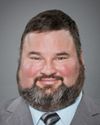Thank you, Dr. Brown.
Dr. Brown, how many MRI machines would you say are available in Canada?
Evidence of meeting #8 for Health in the 39th Parliament, 1st Session. (The original version is on Parliament’s site, as are the minutes.) The winning word was women.
12:40 p.m.
Bloc

Nicole Demers Bloc Laval, QC
Thank you, Dr. Brown.
Dr. Brown, how many MRI machines would you say are available in Canada?
12:40 p.m.
Plastic, Reconstructive and Cosmetic Surgeon and Associate Professor, Department of Surgery, University of Toronto
I do not know the answer to that.
12:40 p.m.
Bloc

Nicole Demers Bloc Laval, QC
Don't you suggest to your patients, once they've had the surgery with the implants, that every year or every other year they be tested with an MRI machine to make sure there aren't leaks? Isn't that proper procedure?
12:40 p.m.
Plastic, Reconstructive and Cosmetic Surgeon and Associate Professor, Department of Surgery, University of Toronto
It is not, Madame Demers. There is no consensus to suggest that routine screening by MRI is appropriate. That is not the standard of practice in Canada, and that was not the recommendation of the radiologist who sat on our expert advisory panel.
12:40 p.m.
Bloc

Nicole Demers Bloc Laval, QC
Does that apply to women who have to get their breasts examined every year after they're 50 years old?
12:40 p.m.
Plastic, Reconstructive and Cosmetic Surgeon and Associate Professor, Department of Surgery, University of Toronto
Yes. The present standard in Canada is regular monthly self-examination, and mammograms and ultrasound as required. MRI is used as a secondary or tertiary screening if a potential problem is noted to exist.
12:40 p.m.
Conservative

The Chair Conservative Rob Merrifield
Madame Demers, your time has gone.
Mr. Fletcher, you have five minutes.
12:40 p.m.
Conservative

Steven Fletcher Conservative Charleswood—St. James—Assiniboia, MB
My interest is in the process. Did women with breast implants have any input on the breast implant cohort study?
12:40 p.m.
Deputy Chief Public Health Officer, Health Promotion and Chronic Disease Prevention, Public Health Agency of Canada
Yes, they did. There was a consultation process in 1992 and 1995. The women actually participated in these consultations in terms of the protocol and design of the whole study. So they were involved at the inception.
12:40 p.m.
Conservative
12:40 p.m.
Deputy Chief Public Health Officer, Health Promotion and Chronic Disease Prevention, Public Health Agency of Canada
This study underwent rigorous ethical reviews. As you know, the women came from two provinces, Ontario and Quebec, and the investigators in these provinces came from Laval University in Quebec and from Cancer Care Ontario. Reviews were done by the University of Toronto ethics review as well as l'Hôpital du Saint-Sacrement ethical review process in those two provinces.
Other review processes were done during the time of the record linkage, which happened later, as I mentioned. That also required extensive ethical review processes.
So the answer to that is that this study met all the rigorous ethical reviews that are necessary.
12:40 p.m.
Conservative
12:40 p.m.
Deputy Chief Public Health Officer, Health Promotion and Chronic Disease Prevention, Public Health Agency of Canada
The funding came initially from Treasury Board, but the provinces also contributed, particularly in kind, and the total amount for this study from 1995 right to this time is about $2.5 million. A good deal of it is also in-kind resources in terms of the researchers, the epidemiologists, and the analysis.
12:40 p.m.
Conservative

Steven Fletcher Conservative Charleswood—St. James—Assiniboia, MB
You mentioned the researchers. How did they get the patient's records, the health records?
12:40 p.m.
Deputy Chief Public Health Officer, Health Promotion and Chronic Disease Prevention, Public Health Agency of Canada
As you know, epidemiological cohort studies require rigorous approaches, one of which is access to information. In Quebec there's a body I don't know the name of--perhaps Dr. Yang Mao could tell me--but there's a body there that was required to be consulted in terms of release of information.
Also, in Ontario there's a regulation of the...I think the Ontario Medical Act, that we also need to go to so physicians can release patient information. Those two bodies were certainly consulted and agreed to the release, but there definitely was a strong provision for making sure the individuals were anonymous.
Perhaps Dr. Yang Mao, being part of the methodology, might want to add some further answers to that.
June 8th, 2006 / 12:45 p.m.
Dr. Yang Mao Director, Health Promotion and Disease Prevention, Public Health Agency of Canada
The record in Quebec comes from Med-Echo's surgery record and from the plastic surgeon's office. We announce these records publicly and send them to the patient. We tell them that if they don't want to participate, they can call a number or respond with the card we provide. But the data has come from Med-Echo's surgery office and from the plastic surgeon's office.
12:45 p.m.
Conservative
12:45 p.m.
NDP

Penny Priddy NDP Surrey North, BC
Thank you, Mr. Chair.
My first question is to Dr. Zuckerman. I didn't realize until I did some recent reading about platinum and breast implants.... Could you tell me, if you look at what I would call generation one, generation two, and generation three breast implants, whether the level of platinum is the same or has significantly decreased?
The second part to that question would be--I think it was partly on the screen--what the two or three most common or perhaps most serious results you would see with women who've had significant amounts of platinum in their body, which stays and reacts in their body? I think some of these other examples are not platinum.
12:45 p.m.
President, National Research Centre for Women & Families
One of the common complications that women who have problems that seem to be related to their implants complain about has to do with concentration and memory loss. They get better when the implants are removed. The women are often in their thirties and they feel like they're in their seventies. They're having trouble concentrating, they can't remember things, they can't speak coherently. It's these kinds of neurological problems that could be related to the platinum
There is no data that compares the different generations. The platinum seems to come from the shell, not from the gel. Platinum is used to thicken silicone to make the elastomer that makes the shell. That's not the natural form of silicone. That's why it's used. Some research is under way to see whether these new gummi bear implants have more platinum; thickening the gel so much may require that you use platinum.
The amount of platinum used to make breast implants is supposed to be really microscopic--very tiny amounts. What we don't know is whether some end up having more platinum in manufacturing than they're supposed to. Perhaps that would explain why some women get very sick from breast implants and other women don't.
12:45 p.m.
NDP

Penny Priddy NDP Surrey North, BC
I think this is to Health Canada, but I'm not sure. Breast implants are a medical device. Could you tell me the percentage of “medical devices” that are applied for that are breast implants?
12:45 p.m.
Assistant Deputy Minister, Health Products and Food Branch, Department of Health
Sorry, I'm not sure I understand the question.
12:45 p.m.
NDP

Penny Priddy NDP Surrey North, BC
For the sake of the discussion, let's say 100 people apply for a medical device--
12:45 p.m.
Assistant Deputy Minister, Health Products and Food Branch, Department of Health
That's the special access program. Okay.
12:45 p.m.
NDP

Penny Priddy NDP Surrey North, BC
Yes. What percentage of those 100, or however it goes, would be for breast implants?
12:45 p.m.
Assistant Deputy Minister, Health Products and Food Branch, Department of Health
Thanks for that clarification.
I can give you some numbers from last year, to give you a sense of this. We had approximately 11,000 requests for all medical devices, and about 8,500 were for silicone gel implants. I should add, though, that some of those requests that we get for other types of things, for other drugs and devices and so on, might be in lots of several hundred.